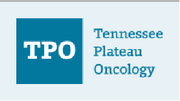How Frequently Should Women Be Screened for Breast Cancer

About one in eight women is estimated to develop breast cancer at some point in her life. Although the rate of occurrence is relatively high, physicians use mammogram screenings to detect the disease early and take women through life-saving treatments. Since this disease can impact any woman—especially those over the age of 50—all should follow recommended screening guidelines. To help you protect yourself against breast cancer, here are a few common questions about when and how often to schedule mammograms.
A Brief Guide to Breast Cancer Screening
What Is a Mammogram?
A mammogram is a specific type of X-ray that creates a detailed image of the soft tissues inside the breast. Doctors use these images to detect abnormal growths, such as benign and malignant tumors.
When & How Often Should You Be Screened?
According to the U.S. Preventive Services Task Force (USPSTF), women with an average risk of breast cancer should have mammograms once every two years between the ages of 50 and 74.
 However, the American Cancer Society publishes slightly different guidelines for early detection of breast cancer. They recommend screening women once a year between the ages of 45 and 54. At 55, women of average risk can continue annual screenings or switch to biennial mammograms.
However, the American Cancer Society publishes slightly different guidelines for early detection of breast cancer. They recommend screening women once a year between the ages of 45 and 54. At 55, women of average risk can continue annual screenings or switch to biennial mammograms.
Since guidelines vary, talk about your individual risk with a doctor.
Why Are Earlier Screenings Recommended?
Both the American Cancer Society and USPSTF state that women should have the choice to begin routine mammograms as early as age 40, depending on their presumed risk. You may have a higher risk of breast cancer if you have a family history of the disease.
Early screening may also be recommended if you develop a lump, have soreness, or discharge blood from the nipple. Every woman should conduct routine breast self-exams at home and talk to a doctor if they notice any signs or symptoms of concern.
What Happens When Screenings Produce Positive Results?
If a mammogram produces a positive result, an oncologist will recommend further steps for a more thorough diagnosis. In some cases, another mammogram or an MRI ( magnetic resonance imaging) may be necessary to gather more detailed images of the soft tissue. In other situations, a biopsy may be necessary to remove and analyze a sample of the affected tissue. If cancer cells are present in the biopsy, further treatment may be recommended.
If you’re concerned about recent mammogram results or your overall breast cancer risk, Tennessee Plateau Oncology - Dirk Davidson M.D. will provide further information. Based in Crossville, TN, this oncologist will help determine which additional diagnostics are needed. If breast cancer is present, their care team will develop an advanced treatment plan to lower your health risks. To learn more about their compassionate approach to care, visit them online. For appointments, call (931) 484-7596.
About the Business
Have a question? Ask the experts!
Send your question

